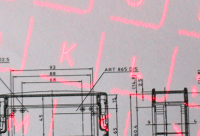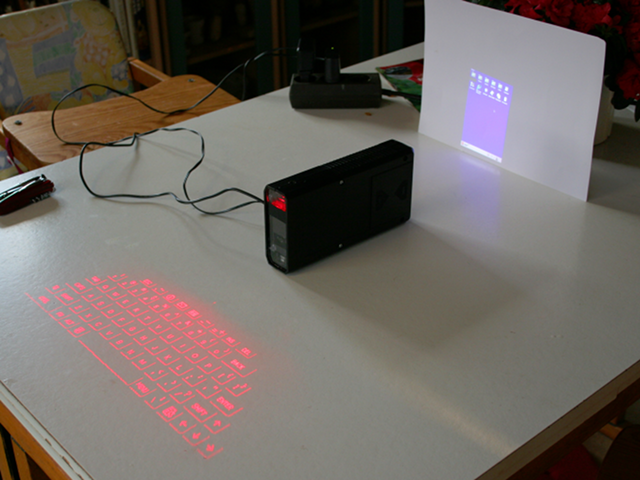Florian Boor
Making tiny things useful...

BeagleBoard hacks
A device study for projected input and output peripherals - the BeagleBrick
Abstract
A mobile computer and/or smart phone device using projection technologies both for data input and output in order to provide comfortably sized user interface keeping the device mechanically small.
Description
A common smartphone with a screen useful for browsing the web and writing emails is a quite big device. Smartphones we see in the market such as the Nokia E90 or the HTC Universal are too large for most users to carry them around. Existing smartphones and similar mobile devices suffer from the fact that the screen and keyboard sizes define the minimum size of the devices.
The idea is to create a smartphone concept study using a tiny video projector as its primary screen. In order not to have the keyboard becoming the largest component then we are going to replace this with a virtual keyboard that gets projected an even surface.
Proof of concept
The original idea was to show a prototype device for demonstrating a new device concept using a GSM modem evaluation kit and a BeagleBoard SBC. The BeagleBoard with its high graphics performance it is a perfect base for a mobile device providing a fast and convenient user interaction. Instead of a large display the device uses a texas Instruments Pico DLP projector to provide the user a large desktop-like environment for convenient use of large applications. For using the device as a regular cellphone there should be a small secondary display like known from some cellphones like the Nokia E90. For text input a virtual keyboard that projects a full-featured alphanumerical keyboard to any even surface is provided. This shows the second technology that is required to get rid of the currently known size constraints.
Details about the actual device study: TBD (description, learnings)
Images

Concept device running